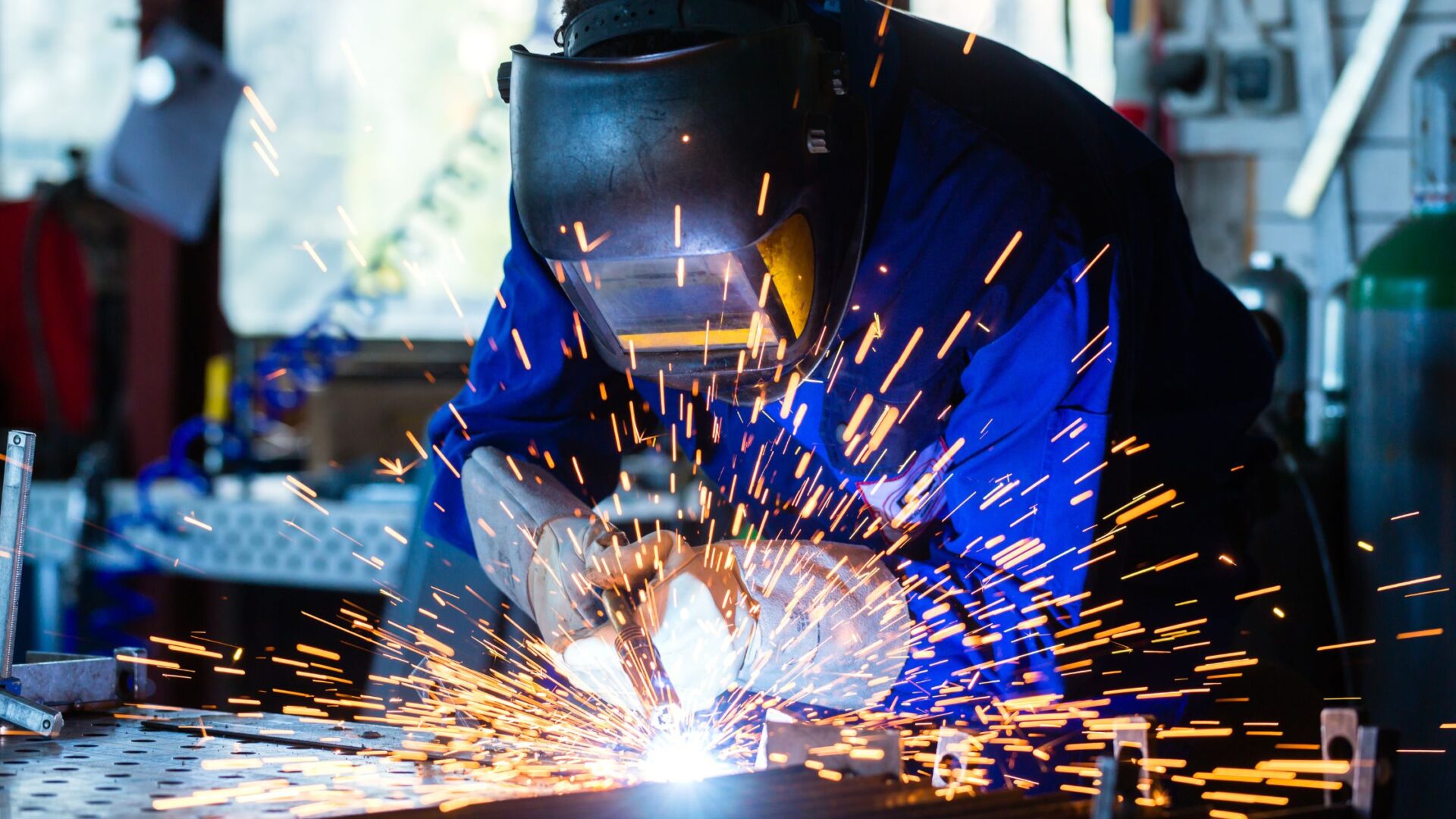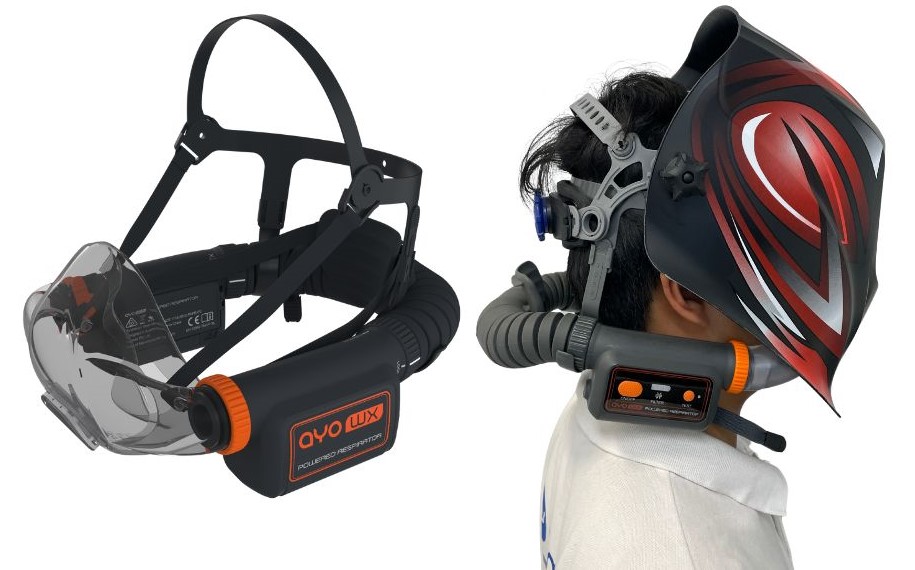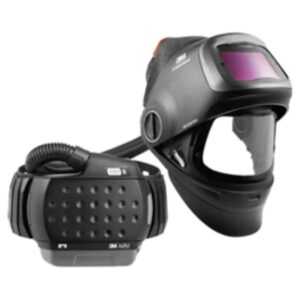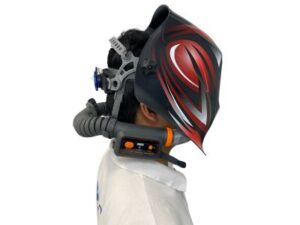The Health Risk of Breathing in Welding Fumes
Welding fumes are very fine particles of metal oxides, and their composition depends on the type of metal being welded. In addition to the general harm of welding fumes once trapped in the lungs, some metal fumes are particularly hazardous, such as nickel, chromium, and manganese. Exposure to welding fumes can cause Pneumonia, Metal Fume Fever, Asthma, COPD, cancer, etc. In fact, welding fume-caused cancer is one of the top 10 occupational cancers in Australia.
Nevertheless, welding is one of the most common activities carried out in the industry, such as in shipyards, construction, automotive, aerospace, and maintenance. Hence, a significant number of workers are potentially exposed to welding fumes, and effective actions are needed for their protection.
To address this serious work health issue, the Australian government has implemented a new workplace exposure standard (WES) for welding fumes to better protect workers: from the previous 5 mg/m3 to the current 1 mg/m3.

Options for the Protection
There are two main options:
- Local Exhaust Ventilation (LEV): Install and use LEV as much as practicable.
- Use effective Respiratory Protection Equipment (RPE)
The safest and best practice is to have both at the same time.
What Kind of RPE Should Be Used in Conjunction with a Welding Helmet/Lens?
Due to the fine particles from welding fumes, N95-grade disposable masks are considered inadequate.
An elastomeric Non-powered Air-purifying Respirator (NAPR) is better than a disposable mask, as the softer cushion of the elastomeric mask provides a better seal. However, being a negative pressure mask is inherently sensitive to facial leaks thus making the protection still not reliable enough. In addition, most NAPRs have bulky filters on the body of the masks, which may interfere with the lens of the helmet. NAPRs are also uncomfortable to breathe over long working hours, as the filters impose an extra burden to breathe, especially in hot conditions.
The new WES for welding fumes will most likely demand the use of a Powered Air-purifying Respirator (PAPR) to be compliant in many welding sites where LEV measures are either impractical or insufficient.
Lastly, welding fumes are accumulative in the lungs, and the tightened 1mg/m3 limit does not mean it is a safe limit, it is only a legal maximum upper limit to be taken as a starting point. So if welding is part of your regular work, the safest approach is to always wear the best welding mask respirator available.
Considering all the above, a welding helmet in combination with a suitable Powered Air-purifying Respirator (PAPR) is the best option for welding protection. This is because:
- PAPR has higher protection than negative pressure respirators due to positive pressure inside the mask.
- Breathing is easier and cooler in hot conditions thus more comfortable to wear doing the tough welding work.
Currently, a popular option consists of a Welding Helmet with an Integrated Loose-fitting Powered Air-purifying Respirator. With this option, the helmet is specially made consisting of a loose-fitting visor for respiratory and face protection, a lens for eye protection, and an air entry at the back of the helmet to receive the air produced by a PAPR that is mounted at the back of the waist and secured by a belt, with filtered air being delivered via a hose to the helmet. A popular brand of this option is a 3M Speedglas G5-01 TW Heavy-Duty Flip-Up Welding Helmet plus an Adflo PAPR unit.
However, there are a few issues with this option:
- Protection level is not the highest in class: As it is a loose-fitting PAPR, the nominal protection factor is 500 compared with a tight-fitting PAPR of 2000.
- Expensive: at a retail price starting over $2,000.
- If you have a common welding helmet already, adding such a PAPR protection means you have to scrap your old mate: a waste of money and not good for the environment.
- Troublesome to wear with poor mobility due to the bulky PAPR unit and the long hose at the back.
- Noisy, as the Adflo PAPR operates at a constant flow, meaning constant annoying noise.
AYO WX HFM-W Welding Half-Face Mask PAPR System – The Perfect Solution for Welding Fume Protection
Invented, designed, and fine-tuned in Australia, AYO WX HFM-W is a state-of-the-art Breath-responsive PAPR that suits welding fume protection extremely well due to the following advantages over the 3M Speedglas – Adflo PAPR system:
- Best-in-class protection: being a tight-fitting mask, its nominal protection factor exceeds 2000 (PAPR P3) compared to the 3M Speedglas – Adflo Loose-fitting PAPR system of 500.
- Fraction of the cost: $559 vs >$2,000 for the 3M Speedglas/Adflo system
- A low-profile half mask designed specifically compatible with most common welding helmets plus a neck-peripheral mounted AYO WX PAPR P3 main unit: beneficial to many welders who currently have a common welding helmet already but now wish to use a PAPR for better respiratory protection.
- Much improved mobility and comfort: No hose, no belt, and lighter.
- Aimwell’s intelligent breath-responsive flow control algorithm ensures positive pressure inside the mask at all times with peak flow exceeding 200 L/min while keeping the noise to a minimum during exhalation and late stage of each inhalation.
- Longer battery run-time: 16 hours vs 3M Adflo PAPR of 12 hours.
- Service life: >10 years vs 3M Adflo PAPR of 5 years.

In Summary:
| Key Comparison | 3M Speedglas G5-01 TW Heavy-Duty Flip-Up Welding Helmet with Adflo PAPR (Loose-fitting) |
AYO WX HFM-W Welding Half-Face Mask PAPR System (Tight-fitting or loose-fitting) |
| Protection Class |
EN12941 TH3, MPF: 50 Nominal Protection Factor: 500 |
AS/NZS 1716 PAPR P3 MPF: > 100 (tight-fitting), 50 (no Fit Testing) Nominal Protection Factor: 2000 (tight-fitting) |
| Wearability/Mobility |
Heavy with hose and belt, troublesome to don and doff, and poor mobility
|
Lightweight and low-profile, no hose no belt, easy to don and doff, good mobility
|
| Welding Helmet | Integrated | Existing non-integrated |
| Peak flow | 170 – 200 L/min | > 200 L/min (Breath responsive) |
| Battery Run-time | 12 hours | Up to 16 hours |
| Weight | 2.13kg (Helmet 1kg, PAPR 1.1kg) – not including hose) | 1.26kg (Helmet 0.54kg (typical), PAPR+half-face mask 0.72kg) |
| Fit Testing | Not required | Depending on the level of protection needed |
| Fitting type | Loose-fitting only, can not be converted to tight-fitting PAPR if needed. | Tight-fitting but can attach a loose-fitting Face Seal for beard-covering. |
| Maintenance | Difficult to maintain and clean | Much easier to maintain and clean |
| Service life | 5 years | 10 years |
| Cost | $2195 | $559 |
Aimwell AYO WX HFM-W Welding PAPR P3 – A New Standard in Welding Fume Protection.
Quick Steps to Use AYO WX HFM-W Welding PAPR P3 with a Common Welding Helmet
- Charge the battery before use.
- Fit the mask assembly over the face and tighten the strap at the back of the neck.
- Remove the Guard Link from the Main Unit, wake it up by pressing its On/Off button, then slide the Main Unit down against the back of your head until it rests on the two supporting hooks of the head strap.
- Push-fit the mask to each end of the Main Unit.
- Adjust the height of the Hook to ensure a well-balanced support for the Main Unit and the mask.
- Put on the Welding Helmet and you are ready to weld safely.


